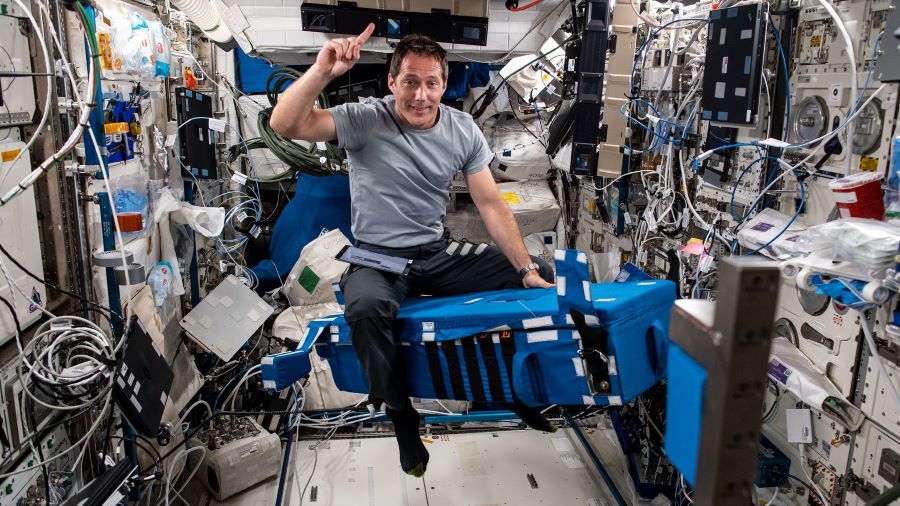Crewmembers Finish Science Experiments

The Expedition 65 crew capped off this week’s research activities aboard the International Space Station by making headway with various science experiments related to human health and materials performance.
Russian flight controllers continued systems testing Friday on the new Nauka Multipurpose Laboratory Module as it heads toward the International Space Station for a scheduled docking next week.
ESA (European Space Agency) astronaut Thomas Pesquet finished the third part of three GRIP tasks. For the experiment, Pesquet performed a set of movements in the supine position. The GRIP experiment studies the long-duration spaceflight effects on the abilities of human subjects to regulate grip force and upper-limbs trajectories when manipulating objects during different kinds of movements.
Commander Akihiko Hoshide, a Japan Aerospace Exploration Agency astronaut, reconfigured the Cell Biology Experiment Facility – Left (CBEF-L), which is used to conduct space plant research. CBEF-L is an upgraded version of an original facility aboard the space station and provides new capabilities and resources, such as a full high-definition video interface, ethernet, 24 power supply, and a larger-diameter centrifugal test environment.
Hoshide, Pesquet, and NASA Flight Engineers Mark Vande Hei, Shane Kimbrough, and Megan McArthur also took turns undergoing eye exams using a remote ultrasound device. Some astronauts have reported experiencing vision changes during and after spaceflight, and the exams provide insight into how spaceflight affects the eye health of crews throughout the mission.
Kimbrough and McArthur continued conducting runs for the Investigating the Structure of Paramagnetic Aggregates from Colloidal Ellipsoids, or InSPACE-4. For the investigation, the pair took turns distributing particles within the sample vial and activated research equipment. InSpace-4 studies the assembly of tiny structures from colloids using magnetic fields and could shed light on how to harness nanoparticles to fabricate and manufacture new materials.
Additionally, McArthur had a chance to complete a Robotic On-Board Trainer for Research (ROBoT-r) session as part of the Behavioral Core Measures experiment. The purpose of the study is to reliably assess the risk of adverse cognitive or behavioral conditions during extended spaceflight missions. Sessions are completed monthly, starting within two weeks of an astronaut’s arrival on station.
from Space Station https://ift.tt/36XRWIY
Comments
Post a Comment